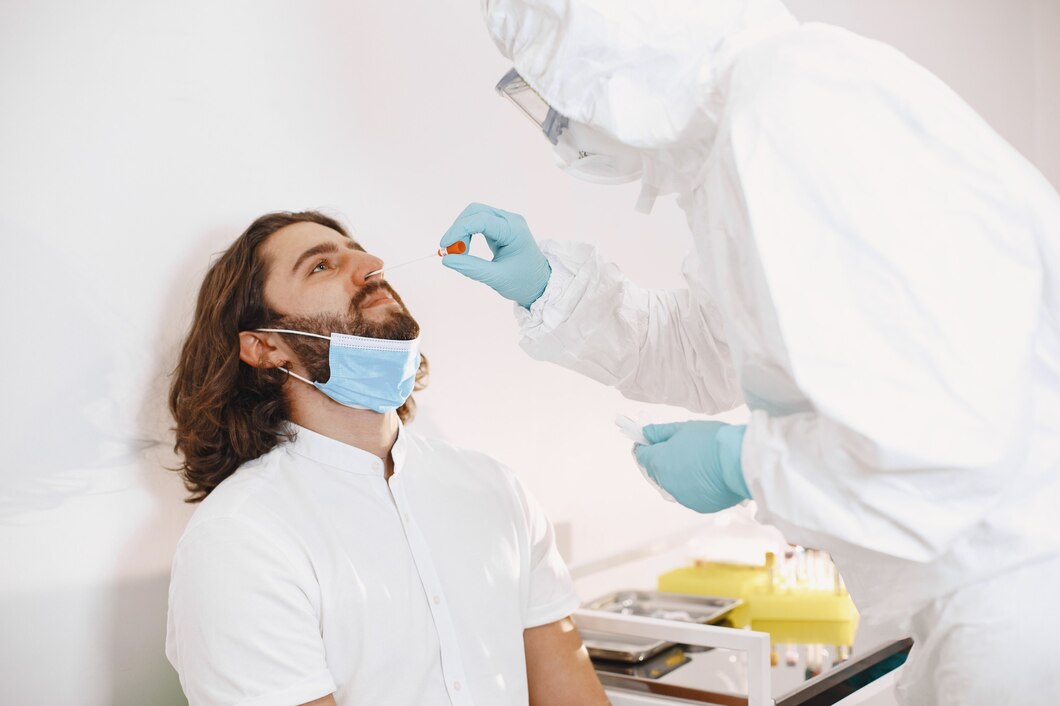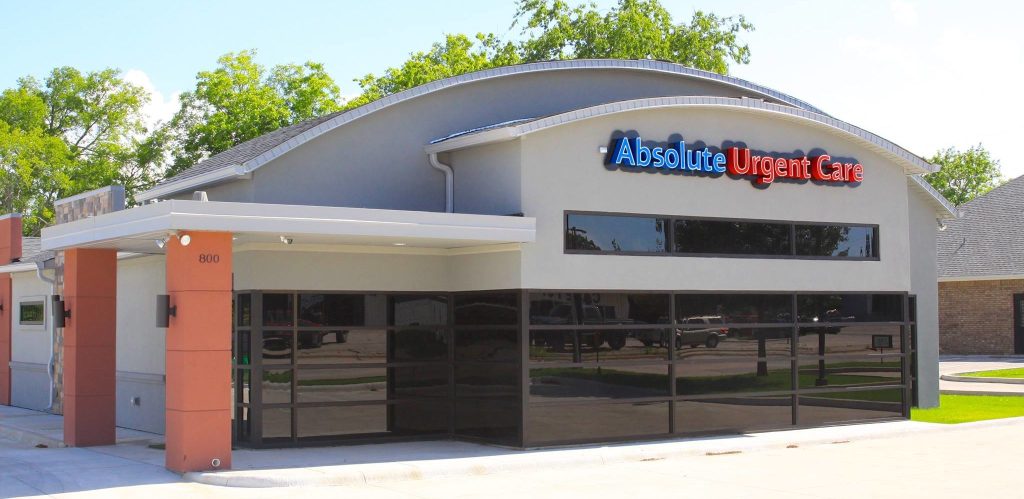State-of-the-Art Advancements in Noninvasive Surgical Procedures
Minimally Invasive Surgery Redefined
Welcome to the future of surgery! Those of us who dislike extensive surgical procedures can now breathe easy as minimally invasive surgery takes over our healthcare facilities. From gallbladder to hernia repairs, or even heart operations, these state-of-the-art practices are preferred over traditional surgeries due to the numerous benefits.
In this blog, let’s learn about the latest developments in minimally invasive surgical procedures, what their advantages are and how they have been applied in real-life scenarios. You will come to understand more deeply how such innovative strategies can greatly improve patient outcomes and why Absolute Urgent Care is leading in this revolution.
What Are Minimally Invasive Surgeries?
Minimally invasive surgery (MIS) refers to surgeries that use small incisions for operation. This is possible through application of specialised devices together with state-of-the-art imaging technology which have enabled surgeons to carry out complex procedures via smaller incisions resulting in shorter recovery periods and fewer complications.
The Growth of Minimally Invasive Surgery
Minimally invasive surgery is not a new phenomenon; however, its applications and efficacy have accelerated exponentially within the past few decades. The evolution of MIS from a single laparoscopic procedure in the late 20th century to today’s robotic-assisted surgeries has brought significant improvements in patient care.
Key Innovations in MIS
Some examples of new advancements made within MI surgery include robotics, use of improved imaging technologies like 3D imagery as well as more advanced surgical instruments among others. Each of these innovations leads to higher precision during and after a surgery thus leading to better outcomes while reducing risks associated with the exercise.
Benefits of Minimally Invasive Surgery
Arguably one of the most appealing features about minimally invasive surgery is that it comes with many advantages. Such patients experience reduced pain levels, shorter hospital stays as well as shorter time to normal activities. Furthermore, MIS is often associated with fewer scars and less chance of infection hence making it appealing to many.
Robotic Assisted Surgery
One of the most significant breakthroughs in the field of minimally invasive surgery has been the development of robot-assisted surgeries. Using robotic systems, surgeons are able to perform highly accurate movements that would be otherwise impossible or difficult with just human hands.
How Do Robotic Systems Work?
The da Vinci Surgical System among other robotic systems allows for remote control of robotic arms that hold surgical tools. Such systems offer improved dexterity and precision thereby enabling more complex procedures to be done using minimal invasiveness.
Applications of Robotic Surgery
Robotic-assisted surgery is applied in different medical fields including urology, gynaecology, cardiothoracic surgery etc. As an example, robotic systems have been used to enhance accuracy and reduce complications during prostatectomies and hysterectomies.
Laparoscopic Surgery
Also called keyhole surgery, laparoscopic surgery involves inserting a camera and surgical instruments through small incisions. It is commonly used in abdominal and pelvic surgeries.
Common Laparoscopic Procedures
Examples of laparoscopic procedures include cholecystectomy (gallbladder removal), appendectomy (appendix removal) intestines repair following hernias etc. Reduced invasiveness leads to faster healing periods as well as less pain after operations.
Advantages Over Open Surgery
Comparatively speaking, there are numerous advantages associated with laparoscopy over open surgical methods. Smaller incisions mean reduced trauma to the body thus faster healing process plus minimal visible scarring. Additionally patients generally complain less about discomfort postoperatively and have lower incidence of complications compared to traditional modalities.
Endoscopic Surgery
Furthermore, endoscopy is the process of using an endoscope; that is, a flexible pipe with light and camera to diagnose and operate on internal organs. Gastrointestinal surgeries specifically benefit from this approach.
Methods and Instruments
In most cases, endoscopic procedures use special tools that can be passed through the endoscope. Some of these tools include forceps, scissors, biopsy devices and others that allow surgeons to perform multiple operations while causing minimal damages to other parts.
Endoscopy for Management Other Conditions
Diseases like esophageal disorders, stomach ulcers and colorectal diseases are treatable by application of endoscopic procedures. These surgeries have reduced recovery time thus reducing chances of complications arising from them.
Minimally Invasive Cardiac And Thoracic Surgery
Classical cardiothoracic surgery had huge cuts and took long recovery periods. However, the field has been transformed with the advent of minimally invasive techniques which offer alternative less invasive options for lung or heart surgeries.
Novel Methods in Cardiothoracic Surgery
VATS (Video-Assisted Thoracoscopic Surgery) and Minimally Invasive Coronary Artery Bypass Grafting (CABG) are examples of how less invasive cardiac surgery methods evolved over time. This eliminates the need for large incisions as well as enhances patient outcomes.
What Heart Patients Gain
Nonetheless, there are still some benefits for patients suffering from heart conditions who have undergone minimally invasive cardiothoracic surgery such as low trauma and quick recoveries among others. Unlike traditional open-heart surgery these types allow patients to go back to their normal activities within no time.
Neurosurgery Advancements
On the other hand neurosurgery advanced significantly in terms of minimally invasive procedures. It became possible to conduct most procedures achieved through huge craniotomies via small holes reducing risks involved in brain operation.
Key Minimally Invasive Neurosurgical Procedures
Endoscopic Skull Base Surgery and Minimally Invasive Spine surgery are some of the major techniques in minimally invasive neurosurgery. These approaches avoid damage to other tissues while reducing recovery period.
Better Results in Neurosurgery
Further, results for patients have been enhanced by using minimally invasive techniques in neurosurgery. Due to reduced trauma and fast healing, patients can resume their lives earlier after surgery.
Innovations in Orthopaedic Surgery Field
Orthopaedics has embraced less invasive procedures to treat several musculoskeletal disorders. These surgical procedures are transforming the orthopaedic care landscape with arthroscopy being one of them.
Less Invasive Arthroscopic Procedures
Arthroscopy is an example where a tiny camera and instruments are inserted through small slits into the affected joint so as to identify and treat it. Knee, shoulder, and hip surgeries typically require arthroscopy for accurate diagnosis as well as treatment.
Advanced Joint Replacements
Furthermore, less invasive joint replacement methods involve smaller cuts and special tools which cause minimum damage to tissues leading to faster recoveries from surgeries than traditional ones. Compared to traditional surgeries, most patients get back to normal life quickly again due to these reasons.
New Gynecological Surgery Techniques
Minimally invasive surgery has changed gynaecological practice because it provides less traumatic options for managing various conditions among women.
Typical Women’s Operations = Commonly performed gynaecological surgeries (hysterectomy, myomectomy & endometriosis removal) can now be done with minimal invasion thus resulting in rapid recovery of women while minimising postoperative pain-True or false?
Women’s Health Benefits
However, minimally invasive gynecologic surgery will reduce scarring on females, decrease their hospital stays plus other positive outcomes associated with such developments. These advancements give women confidence because they can attend early intervention programs about health issues that affect them without fear of leaving ugly marks on their bodies.
Innovations in Pediatric Surgery
Another area where minimally invasive techniques have had a great impact is pediatric surgery. Children need procedures that are less invasive and promote faster healing processes with minimal complications.
Pediatric Surgical Approaches
Laparoscopic and thoracoscopic procedures are applied by children’s surgeons in treating different conditions. It is this method that allows the child to get back into normal routine as quickly as possible since it involves very little pain and scarring.
Enhancing Care for Young Patients
Minimally invasive approaches in children’s surgery are associated with improved care and outcomes. After undergoing surgery, kids can return to their normal activities, living better lives.
The Future of Minimally Invasive Surgery
The future of minimally invasive surgeries looks bright with continued research and technological advances opening up more innovative methods.
New Technologies
Further improvements in minimally invasive surgery will come from emerging technologies such as augmented reality, artificial intelligence, advanced robotics. These developments will improve surgical precision and enhance patient outcomes.
Absolute Urgent Care’s Pledge
At Absolute Urgent Care, we are committed to remaining at the forefront of minimally invasive surgical techniques. Our experts constantly look for the newest advancements to ensure that our patients receive the best possible care.
Reduced pain, quicker recoveries and improved outcomes are some of the benefits offered by minimal access surgeries that have transformed healthcare landscapes. From robotic-assisted surgeries to endoscopic procedures, these groundbreaking innovations have had great impact across diverse areas of medicine.
If you are thinking about minimal access operations it is crucial that you talk to experienced professionals who can help guide you through the process. At Absolute Urgent Care we provide world-class healthcare using new minimally invasive techniques.
Interested in knowing more about minimally invasive procedures?
Call us now at Absolute Urgent Care and book your consultation session. We care about your health hence we will walk with you every step until you are well again.





















